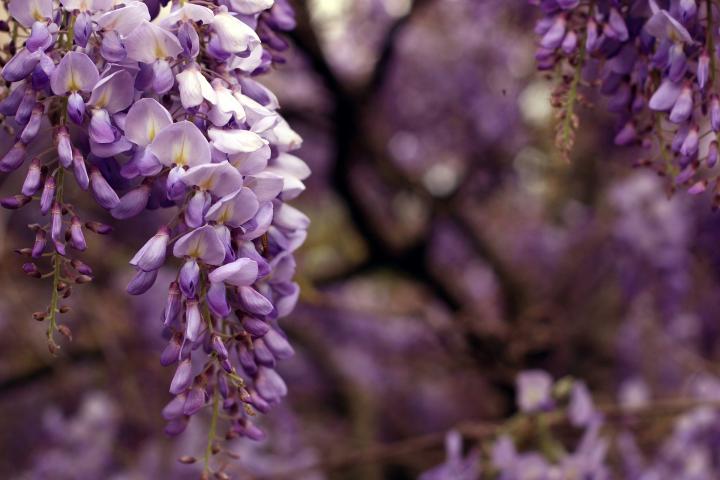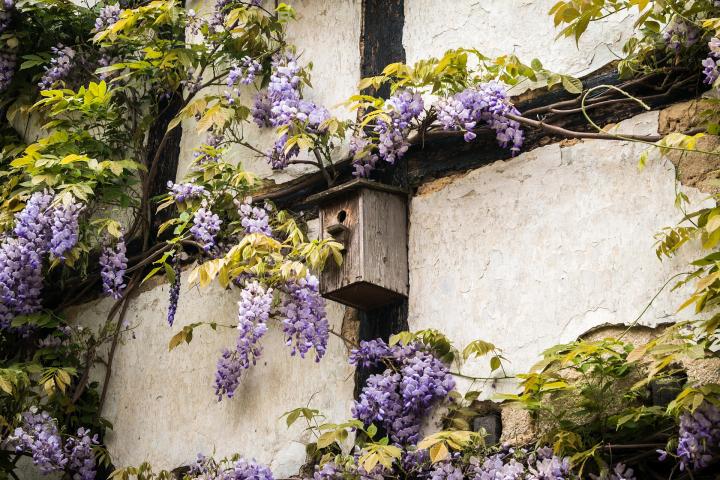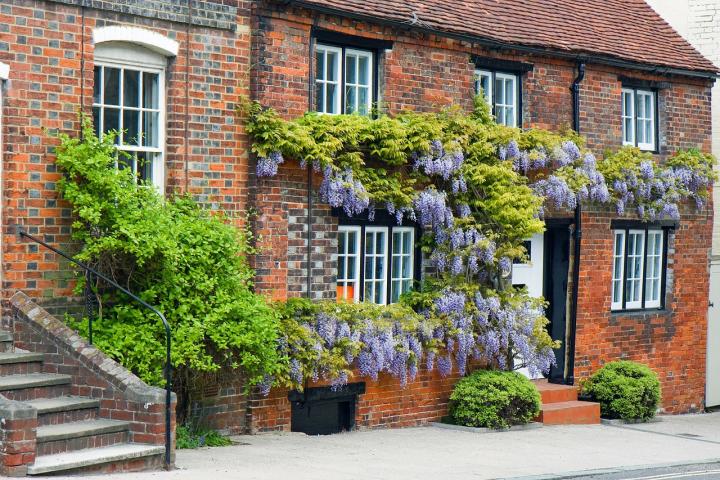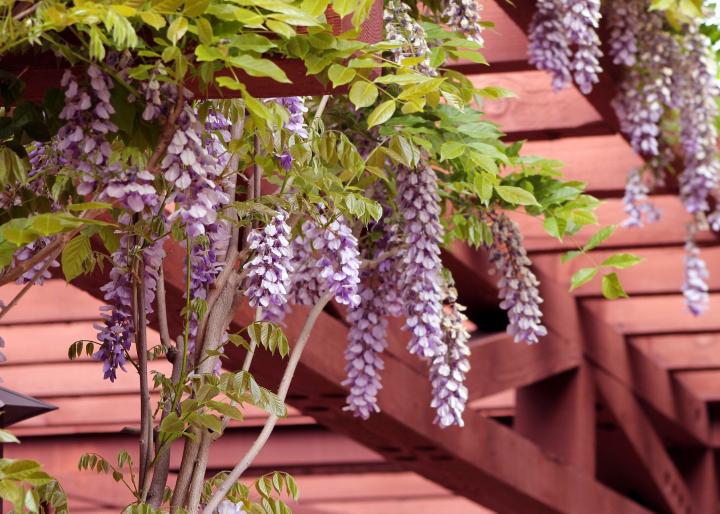
Planting, Growing, and Pruning Wisteria
Read Next
Types
Native Wisteria
If you are located in North America, consider planting a species of wisteria native to the continent, such as:
- American wisteria (W. frutescens) grows in Zones 5 to 9. It’s native to a range of states covering Virginia to Texas, southeast to Florida and north up through New York, Iowa, and Michigan. The vine grows 25 to 30 feet long with shiny dark-green leaves and large, drooping lilac or purple-blue flower clusters, which appear after the plant has leafed out. The blooms will only appear on new wood. However, note that the flowers tend to be more lightly fragrant than the Asian wisterias’ flowers.
- Kentucky wisteria (W. macrostachya) grows in Zones 4 to 9. This late-season bloomer is native to the southeastern U.S. and is similar to American wisteria (it is sometimes considered a variety or subspecies of American wisteria). Kentucky wisteria bears mildly fragrant bluish-purple flowers after growing only 2 to 3 years, making it the quickest wisteria to bloom.
- ‘Blue Moon’ is an extra-hardy cultivar of native Kentucky wisteria, with showy silvery-blue clusters. It blooms in late spring or early summer. It’s cold hardy to –30°F.
Non-Native Wisteria
- Chinese wisteria (W. sinensis) and Japanese wisteria (W. floribunda) are non-native, invasive species, so we do not recommend them for North American gardens, despite the fact that they are regularly sold at nurseries and garden centers. They are hardy in Zones 5 to 9 and are capable of growing 30 to 60 feet in length (and beyond in the Southern U.S.). Two common varieties of Japanese wisteria include:
- ‘Honbeni’ (syn. ‘Honko’): popular, bears clusters of pink flowers in late spring
- ‘Alba’ (syn. ‘Shiro Noda’): bears lovely clusters of pure-white flowers in late spring

Gardening Products
More Like This
Comments
Because it's hard to advise without seeing the actual damage, for best advice, we'd recommend talking to a horticulturist who can examine the plant.
In general, wisterias can usually survive being pruned almost to the ground. As long as the roots are intact, they should send up shoots next season; it may take a few years, however, for the vine to bloom again. If you want to use this method, cut below the area of trunk damage.
If you want to try to save the main trunk of the vine, success will depend on how much damage the plant has sustained. In certain cases, the damaged trunk can be wrapped temporarily with special material for this purpose to help it to heal. Also, certain supports might be needed. A horticulturist would know the best method for your situation, and how to help prevent insects and diseases from entering the wound.
To alleviate plant stress, keep the plant watered (a normal amount) for the rest of the autumn. Provide some winter protection, such as about 6 inches of mulch and a windbreak. Remove them in spring as temperatures warm.
Hi, Jenny, You'll need to prune the wisteria. In late winter (Jan/Feb), cut the shoots back to about 3 buds from the base to create short, flowering spurs. Remove long shoots from the base of the plants.
Ideally, you'll prune twice a year--down to 6 buds in August and down to 3 buds in late winter.
Training against a south-facing wall is perfect for wisteria. Support can be provided with an espalier--with horizontal support wires (3mm galvanised steel) set one foot apart.
- « Previous
- 1
- 2
- …
- 10
- Next »













This is a common problem. It is the nature of the plant to send up shoots after a few years of apparent controlled growth. The best solution that we know is to use the "cut stump" treatment: Cut the shoot stem, or trunk, close to the ground and as level as possible. Then, immediately paint on a herbicide that contains triclopyr. (Do not do this in rain or when rain is forecast.) Consult a nursery for a product; most are known as stump or bruch killers.
BTW, this same process is recommended for eliminating the mother plant, or main stem. Be aware that as long as you have the main plant, you will probably continue to see shoots both near and far from it.